|
Canon TS-E 24mm f/3.5 L II - Review / Lens Test - Analysis - max. shift (12mm) |
|
Lens Reviews -
Canon EOS (Full Format)
|
|
Page 4 of 5
 The following analysis is based on the a 12mm shift or in other words - we aligned the top end (rather than the center) of the test charts here.
The following analysis is based on the a 12mm shift or in other words - we aligned the top end (rather than the center) of the test charts here.
Distortion
Shifting the lens has no significant effect on the distortion characteristic of the lens. Technically it is even slightly reduced to 0.7% barrel distortion but you may notice that the alignment of the distortion grid is perfectly flat at the top - which is basically near the center of the image circle - and slight more distorted at the bottom which is located close to the edge of the image circle now.
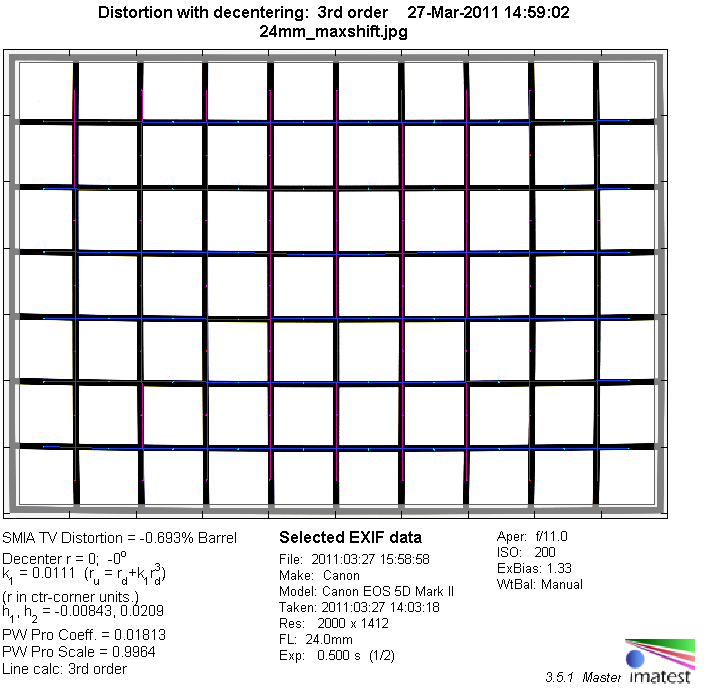
Vignetting
As mentioned the image circle is of the lens is immense (~67mm diameter vs ~43mm diameter for non-TS lenses) but if you shift the lens to the most extreme position you exploit the potential to the max of course as well (~43mm + 2* 12mm shift = ~67mm). The resulting vignetting characteristic is very unusual because the image side shifted to the edge of the image field receives a much worse edge shading compared to its inner counterpart. The "worst" image portion has a vignetting of 2.4EV at f/3.5 which is rather hefty albeit not unexpected. If possible you should stop down to f/8 where the problem is much less pronounced at ~1EV. This is still visible but not overly disturbing.
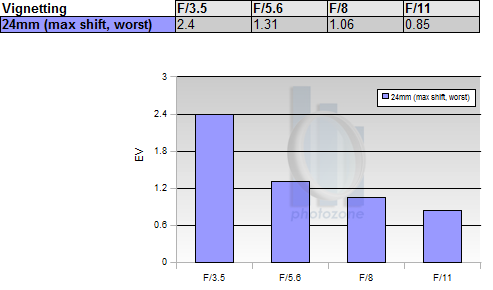
Here's a visual comparison between the "unshifted" and "max. shifted" vignetting at f/3.5:
| shift = 0mm, f/3.5 |
shift = 12mm, f/3.5 |
 |
 |
The following qualitative illustration of the effective image field vs the image circle for the maximum shift may help you to understand the effect:
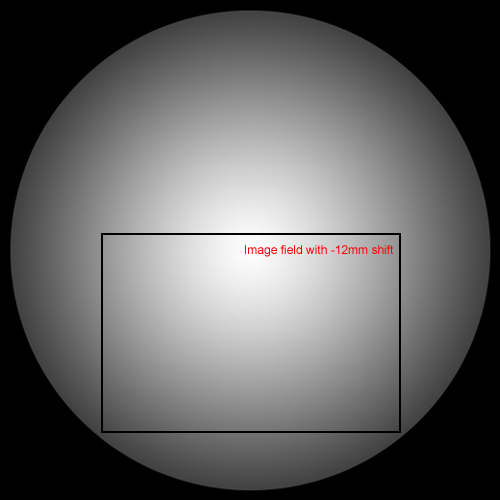
MTF (resolution)
The maximum shift has naturally also an impact on the resolution characteristic. The image is comparatively softer at f/3.5 - this applies slightly to the center as well as the "inner" borders but the "outer" corners are especially affected here. These "outer" corners are quite soft so this setting should be avoided if possible (and relevant). The issue improves already at f/5.6, especially in the image corners. The image quality is very good across the frame here. The very good sweet spot is reached at f/8. The results are, again, softer at f/16 (and beyond) due to diffraction.
We should clearly point out again that this is the performance based on a shift of 12mm. You can expect much better figures at less extreme shift settings. It's also worth to mention that in the outdoor conditions you tend to shoot "upwards" so the "worse" image portion is located the sky portion where it plays a less significant role.
Below is a simplified summary of the formal findings. The chart shows line widths
per picture height (LW/PH) which can be taken as a measure for sharpness.
If you want to know more about the MTF50 figures you may check out the corresponding
Imatest Explanations
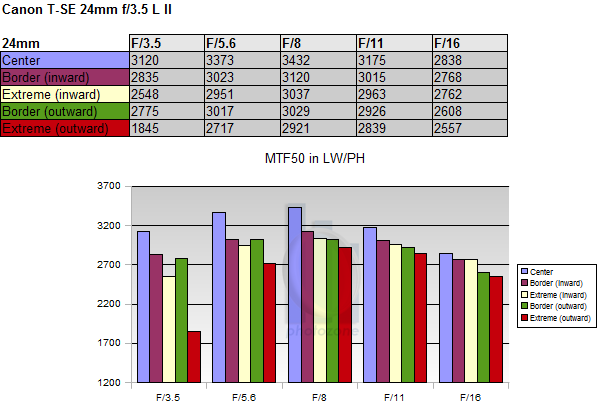
Chromatic Aberrations (CAs)
It may be surprising but lateral CAs are still very well controlled even at the "outer" borders. Technically they're even slightly better than in the conventional setup. However, please note that the CAs simply vary across the image field. It just shows that Canon did an outstanding job here.
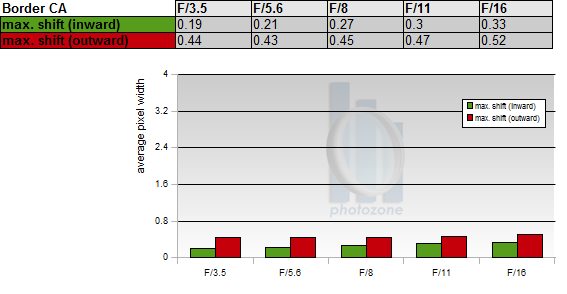
|